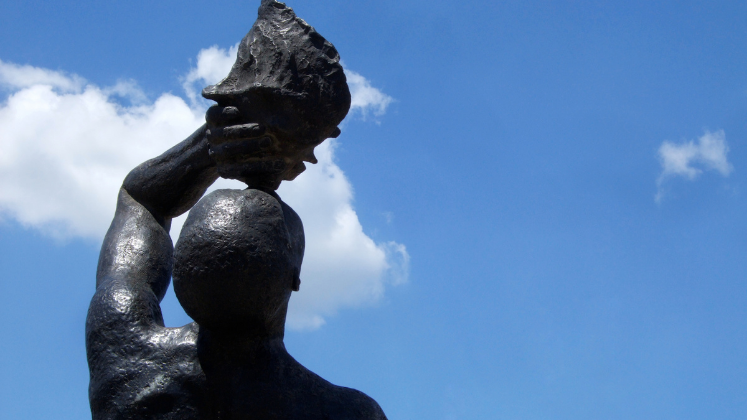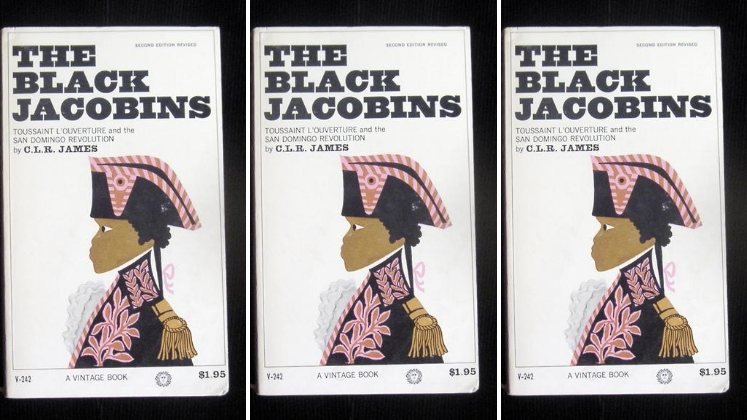In Rituals, Runaways, and the Haitian Revolution: Collective Action in the African Diaspora, Crystal Nicole Eddins explores the networks of solidarity integral to the Haitian Revolution, showing how the self-mobilisation of enslaved people through collective action forcibly eroded the institution of slavery. Eddins’s work makes a significant contribution to the decolonisation of knowledge through a commendable dialogue between African/diasporic studies, the black radical tradition and theories of social movements, writes Juan Vicente Iborra Mallent.
Rituals, Runaways, and the Haitian Revolution: Collective Action in the African Diaspora. Crystal Nicole Eddins. Cambridge University Press. 2021.
Find this book (affiliate link):![]()
 In Rituals, Runaways, and the Haitian Revolution, Crystal Nicole Eddins reflects upon the impact of events in late-eighteenth-century Saint-Domingue on modern history, paying homage to scholars Anna Julia Cooper and C. L. R. James in the process. The largest black slave rebellion in American history nurtured a black radical tradition that, from the emancipatory impulses of the descendants of enslaved people, has drawn paths of liberation beyond the legacies and current manifestations of racial capitalism.
In Rituals, Runaways, and the Haitian Revolution, Crystal Nicole Eddins reflects upon the impact of events in late-eighteenth-century Saint-Domingue on modern history, paying homage to scholars Anna Julia Cooper and C. L. R. James in the process. The largest black slave rebellion in American history nurtured a black radical tradition that, from the emancipatory impulses of the descendants of enslaved people, has drawn paths of liberation beyond the legacies and current manifestations of racial capitalism.
Eddins does not limit herself to analysis of large-scale events and macro-processes. Rather, she delves into the bowels of history, locating the agency of fugitive slaves (maroons), both in cases where they were on the run for short periods of time – with the mobility of individuals nurturing collective ideas around resistance – as well as the formation of permanent settlements that posed an alternative to plantation. For this, the author analyses over 100,000 runaway advertisements taken from colonial newspapers that provide different data around the escape and the cultural context of the fugitives. Combining statistical and quantitative precision with the richness of personal and group experiences, Eddins illustrates how the mobilisations of black slaves in the diaspora defined specific repertoires of collective action that eroded the institution of slavery.
Like Toussaint Louverture, Jean-François Papillon, Georges Biassou and Jean-Jacques Dessalines, maroon leaders such as François Mackandal, Polydor, Louis Gillot dit Yaya, Thélémaque Canga, Noël Barochin and Colas Jambes Coup deserve to be acknowledged. Making visible the struggles undertaken by these and many other maroons is necessary to account for the contributions that enslaved people made to a process that has frequently been narrated through the role played by the elites.

Image Credit: ‘Conch’ by Roaring Jellyfish Designs, licensed under a Creative Commons Attribution 3.0 Unported License
Claiming that rituals of African origin, marronage and a multiplicity of interaction nodes were essential in unleashing the Haitian Revolution (1791-1804), Eddins continues along the path forged by Jean Fouchard, Carolyn Fick and Michael Gomez by writing a history ‘from below’ of the Revolution. By carefully excavating the complex existences and practices of specific historical subjects, the author demonstrates the persistence of long-term patterns of collective action and agency. She unravels the epistemological grounds of African origin that had an impact on the forms of collective organisation that gave impetus to the insurrection.
The author in no way denies the significance of the economic and structural factors of the plantation and white supremacism, pointing to the importance of colonial legacies, political economy and inter-imperial disputes. Neither the violent repression of maroons, nor the less coercive forms of ‘channeling’ (‘making offers to dissuade or encourage certain types of behavior’ (247)), could annul the enslaved’s desire to obtain freedom by their own means. Multiple forms of subversion were witnessed across genders and local spaces of the plantation. Accounting for these forms of interaction and intertwinement behind the insurgency, the author points out how problematic it is to use ‘dichotomized categories’ to refer to social actors.
Relationships across and within homogeneous and heterogeneous groups, rural and urban communities and amongst enslaved and free black people reflect a common antagonistic consciousness and desire for freedom. The construction of these forms of interethnic and racial solidarity find an echo in later forms of organisation and militancy: for example, Pan-Africanism. The hurricane of ‘common winds’ against the plantation throughout the Caribbean expressed counteraction to the logic of racial slavery, and was witnessed by the attempts of slaves to reaffirm their humanity against their commodification and enslavement.
Traditional historiographical approaches have portrayed the underlying ideologies of the Haitian Revolution as a sort of vernacular reception or ‘indigenization’ of revolutionary ideas coming from France. However, the multiple repertoires of collective action from below that took place before 1791 require us to confront Eurocentrism, positivism and methodological nationalism. These approaches have shaped how the events that took place in Haiti were apprehended and to what extent these could be situated in universal history. Beyond erasure and invisibility, another modernity was drawn in Haiti, and other notions of freedom, property, identity and citizenship were claimed by enslaved subjects.
Like contemporary authors Vincent Brown, Marisa J. Fuentes, Stephanie Smallwood and Saidiya Hartman have also shown, Eddins points to the possibility of speculating through encountering and confronting a silenced past, imagining possibilities beyond the forms of captivity reproduced by the colonial archive. The lack of primary sources supposes that the author must reconstruct the history of the insurgents through other records and intuitions. This means Eddins pays attention to other forms of evidence – principally the symbolic universes of the actors, shaped by the political and religious contexts of their African regions of origin.
In so doing, Eddins thereby demonstrates another historical sensibility, bringing us closer to the spiritual leadership, the ancestral kinship and language, as well as the rituals (Vodou), that nurtured the living bodies of history. Taking into account the non-human forces and deities that guided those maroon fugitive itineraries, she shows the limitations of conceiving them as ‘symbolic’, giving these forces a central role in collective action and facilitating encounters to escape, plot and rebel.
Thus, Eddins’s work makes a significant contribution to the decolonisation of knowledge through a commendable dialogue between African/diasporic studies, the black radical tradition and theories of social movements. As she states:
Prevailing social movement frameworks deal with questions surrounding the timing and emergence of collective action, but have not fully incorporated analysis that accounts for racist principles that structure society and intentionally exclude Black people from having access to power and resources (13).
Works like this can help us account for the multiple racial hierarchies of dispossession and exploitation that have accompanied modern and colonial expansion. Likewise, exploring these colour lines is necessary to understand historical forms of collective organisation and resistance. It is necessary to closely examine the configurations of racial capitalism in order to better understand our current global order.
As Eddins points out at the end of her book, the recent assassination of Haitian President Jovenel Moïse in July 2021 points to the risk of new imperialist interventions, such as those undertaken by the US between 1915 and 1934, as well as other forms of interference and dispossession, such as France’s continued demand for compensation after Haiti’s independence. This is also reflected in the humanitarian intervention led by MINUSTAH after the 2010 earthquake and the erosion of Haitian political institutions. This has meant greater economic dependence for a country that is besieged by imperialist geopolitical interests in the region.
Even so, the historical struggles of the Haitian people reflect forms of resistance against colonialism and racism that point out paths for collective action. The Haitian Revolution inspired movements from different parts of the continent in their struggle for freedom and emancipation. Support for insurgencies by the Haitian government demonstrate how they became a practical example of solidarity and internationalism, which also explains the attempt to demonise them by the white colonial society that saw the plantation model threatened. The radical nature of the Haitian Revolution appeals more than ever to our times, when racism remains a fundamental principle in the organisation and exploitation of labour.
Note: This review gives the views of the author, and not the position of the LSE Review of Books blog, or of the London School of Economics and Political Science. The LSE RB blog may receive a small commission if you choose to make a purchase through the above Amazon affiliate link. This is entirely independent of the coverage of the book on LSE Review of Books.







